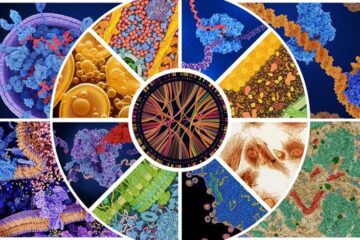Life’s origins were easier than was thought

According to the most accepted theory on the origin of life, life began with very simple molecules, RNA chains, which were able to self-replicate. The problem with the theory, however, is that the fragility of these chains when there are replication errors (mutations) made it almost impossible for them to have evolved into more complex life forms. An international team of scientists, including Universitat Autònoma de Barcelona researchers, has discovered that these early molecules were much more resistant than was thought until now. According to the conclusions of the study, they may have developed enough to contain around 100 genes, which is considered to be the minimum quantity required for the most basic forms of primitive life, similar to the bacteria we have today. The research was published in the September edition of Nature Genetics.
In the primordial soup that produced life on earth, there were organic molecules that combined to produce the first nucleic acid chains, which were the first elements able to self-replicate. According to one of the more accepted theories, these molecules were ribonucleic acid (RNA) chains, a molecule that is practically identical to DNA and that today has the secondary role in cells of copying information stored in DNA and translating it into proteins.
These proteins have a direct active role in the chemical reactions of the cell. In the early stages of life, it seems that the first RNA chains would have had the dual role of self-replicating (as is today the case with DNA) and participating actively in the chemical reactions of the cell activity. Because of their dual role, these cells are called ribozymes (a contraction of the words ribosome and enzyme). But there is an important obstacle to the theory of ribozymes as the origin of life: they could not be very large in length as they would not be able to correct the replication errors (mutations). Therefore they were unable to contain enough genes even to develop the most simple organisms.
An investigation led by Mauro Santos, from the Department of Genetics and Microbiology at the Universitat Autònoma de Barcelona, alongside two Hungarian scientists, has shown that the error threshold, that is, the maximum number of errors that may occur during the replication process of ribozymes without this affecting its functioning, is higher than was previously calculated. In practice, this means that the first riboorganisms (protocells in which RNA is responsible for genetic information and metabolic reactions) could have a much bigger genome than was previously thought: they could contain more than 100 different genes, each measuring 70 bases in length (bases are the units that constitute the genes and codify the information), or more than 70 genes, each measuring 100 bases. It is worth remembering that tRNAs (essential molecules for the synthesis of proteins) are approximately 70 bases long.
The discovery has greatly relaxed the conditions necessary for the first living organisms to develop. “This quantity of genes would be enough for a simple organism to have enough functional activity”, according to the researchers. Recent analysis into the minimum number of DNA genes required to constitute bacteria, the most simple organism today, considers that around 200 genes is sufficient. But in riboorganisms there can be much fewer genes, since DNA genomes include a number of genes that have the role of making the RNA translation system (which enables proteins to be produced) work, which would not be required in RNA-based organism.
Media Contact
All latest news from the category: Life Sciences and Chemistry
Articles and reports from the Life Sciences and chemistry area deal with applied and basic research into modern biology, chemistry and human medicine.
Valuable information can be found on a range of life sciences fields including bacteriology, biochemistry, bionics, bioinformatics, biophysics, biotechnology, genetics, geobotany, human biology, marine biology, microbiology, molecular biology, cellular biology, zoology, bioinorganic chemistry, microchemistry and environmental chemistry.
Newest articles

A universal framework for spatial biology
SpatialData is a freely accessible tool to unify and integrate data from different omics technologies accounting for spatial information, which can provide holistic insights into health and disease. Biological processes…

How complex biological processes arise
A $20 million grant from the U.S. National Science Foundation (NSF) will support the establishment and operation of the National Synthesis Center for Emergence in the Molecular and Cellular Sciences (NCEMS) at…

Airborne single-photon lidar system achieves high-resolution 3D imaging
Compact, low-power system opens doors for photon-efficient drone and satellite-based environmental monitoring and mapping. Researchers have developed a compact and lightweight single-photon airborne lidar system that can acquire high-resolution 3D…





















